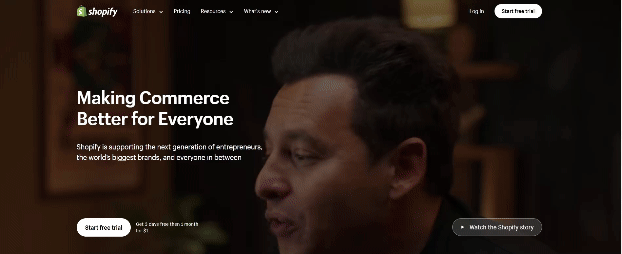
In today’s highly competitive online marketplace, increasing traffic to your website is just one piece of the puzzle. The real challenge is converting those visitors into paying customers, subscribers, or leads. This is where Conversion Rate Optimization (CRO) comes into play. CRO involves refining your website to increase the percentage of visitors who take desired actions, such as completing a purchase or signing up for a newsletter. By optimizing your conversion rate, you can make the most of your existing traffic, turning casual visitors into loyal customers and boosting your business’s bottom line.
The significance of CRO cannot be overstated. A higher conversion rate means more revenue from the same traffic, improving your return on investment (ROI) from marketing efforts. Additionally, optimizing your conversion rate enhances the user experience, as visitors can navigate your website more easily and find exactly what they need. In this guide, we will explore key strategies you can use to optimize your conversion rate and drive tangible results.
What is Conversion Rate Optimization?
Conversion Rate Optimization (CRO) is the process of improving various elements of your website to increase the chances that visitors will take a desired action. These actions could range from making a purchase to signing up for a service. Essentially, CRO helps you make the most of the traffic you already have by converting as many visitors as possible.
CRO impacts your revenue by increasing the percentage of users who act. Moreover, it maximizes your marketing investment because you don’t need additional traffic to see more sales. CRO also enhances the overall user experience, making your website more enjoyable to navigate, which can lead to higher customer satisfaction and repeat business. For any business looking to scale efficiently, CRO is crucial.
Understanding Your Audience: The First Step

Before optimizing, it’s essential to understand your audience. CRO starts with knowing who your visitors are, what they need, and what motivates them. Without this knowledge, optimization efforts can miss the mark, wasting time and resources.
Use tools like Google Analytics, Hotjar, or Crazy Egg to gain insights into user behavior. These platforms provide data on where visitors come from, which pages they visit, and how long they stay. This helps identify areas of your website that are performing well and those causing friction.
Additionally, developing detailed buyer personas helps you understand your audience. These personas reflect the demographics, customer preferences, pain points, and goals of your ideal customers. With this clear picture, you can create a website experience that resonates with your target audience and drives conversions.
Optimizing Your Website’s Structure and Navigation
A well-structured, easy-to-navigate website is crucial for CRO. If users cannot find what they are looking for quickly, they will likely leave without taking action. This results in a higher bounce rate and missed conversion opportunities.
Simplify Site Navigation
Streamlining your site’s navigation is one of the most effective ways to improve conversion rates. Make sure your navigation menus are clear and concise. Group related content under logical headings and ensure your most important pages, like product pages, are easy to access.
 Pool and Hot Tub Depot Simplified navigation
Pool and Hot Tub Depot Simplified navigation
Use Clear and Persuasive Calls to Action (CTAs)
CTAs drive conversions. A well-placed, well-worded CTA can turn a visitor into a customer. Ensure your CTAs are prominent, visually appealing, and action-oriented. Use phrases like “Buy Now” or “Sign Up Today.” Place CTAs above the fold so users see them without scrolling.
Optimizing Landing Pages for Higher Conversion
Landing pages are often the entry point for visitors. They play a critical role in converting traffic into leads or customers. A well-designed landing page should focus on a single goal and provide visitors with a clear path toward conversion.
Elements of a High-Converting Landing Page
Strong Headlines: The headline is the first thing visitors see. It should grab their attention and convey your offer’s value. A compelling headline makes visitors want to explore further.
Engaging Visuals: High-quality visuals, like images or videos, enhance the appeal of your landing page. They should complement your message and help visitors understand your product or service.
Social Proof: Customer testimonials and reviews build trust and credibility. Including social proof reassures visitors that converting is the right decision.
Minimal Distractions: Keep your landing page focused on a single goal. Remove any elements that might distract users from the desired action.
By testing these elements through A/B testing, you can find the best version of your landing page. Testing different headlines, images, and CTAs can lead to significant conversion rate improvements over time.
Speed Up Your Website for Better Performance
Site speed is crucial for conversion rate optimization. In today’s fast-paced digital world, users expect websites to load quickly. If your site takes too long, visitors will abandon it, resulting in missed conversions.
Research shows that a one-second delay in page load time can lead to a 7% decrease in conversions. To avoid this, optimize your site for speed. Compress images, reduce HTTP requests, and use a content delivery network (CDN). Improving your website’s speed enhances the user experience and increases the chances of visitors converting.
Personalizing the User Experience
Personalization is a powerful tool for improving conversion rates. Tailoring the experience to each visitor’s preferences makes the experience more engaging and relevant.
How to Implement Personalization:
Dynamic Content: Show personalized recommendations based on a visitor’s past behavior, like products they’ve viewed or purchased. Dynamic content can make users feel the site is tailored to them.
Behavioral Triggers: Use pop-ups or banners that trigger based on a visitor’s actions. These can offer deals, highlight products, or encourage users to complete a purchase.
Optimizing the Checkout Process for Maximum Conversions
The checkout process is critical for eCommerce websites and one of the most common places where conversions are lost. A complicated or lengthy checkout process can lead to cart abandonment.
Tips for Checkout Optimization:
Offer Guest Checkout: Not all users want to create an account. Offering a guest checkout option reduces friction and makes it easier to complete a purchase.
Simplify Form Fields: Only ask for necessary information. The longer the form, the more likely users are to abandon their cart.
Show Progress Indicators: Display progress indicators to let customers know how many steps are left in the checkout process. This reduces uncertainty and increases completion rates.
Building Trust with Social Proof and Reviews
Trust is essential for conversion rate optimization. When visitors trust your brand, they are more likely to convert. One of the best ways to build trust is by leveraging social proof—showcasing customer reviews, testimonials, and case studies.
Displaying reviews on product pages, highlighting certifications, and featuring industry awards all help build trust with potential customers. A more credible website increases visitor confidence in making a purchase.
Conclusion
Conversion Rate Optimization is an ongoing process. It requires a deep understanding of your audience, continuous testing, and a commitment to improving the user experience. By optimizing your website’s structure, navigation, landing pages, and checkout process while leveraging personalization and social proof, you can significantly boost your conversion rate.
In the evolving world of online business, focusing on conversion rate optimization will help you get more value from your existing traffic. Turn visitors into loyal customers, and set your business up for long-term success. Keep testing, stay informed, and prioritize your customers’ needs.

 Eashan Mehta
Eashan Mehta





